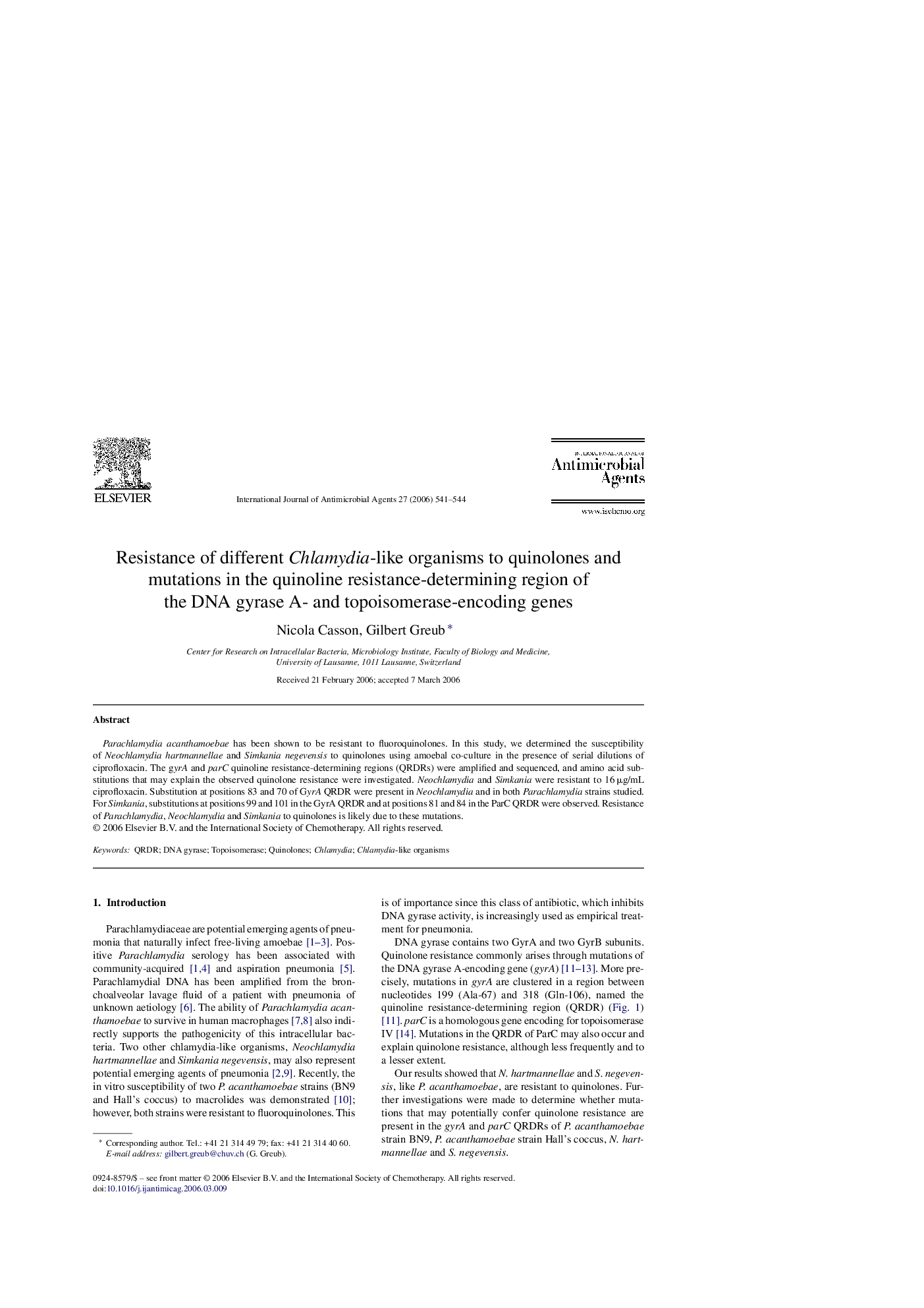| Article ID | Journal | Published Year | Pages | File Type |
|---|---|---|---|---|
| 3361457 | International Journal of Antimicrobial Agents | 2006 | 4 Pages |
Parachlamydia acanthamoebae has been shown to be resistant to fluoroquinolones. In this study, we determined the susceptibility of Neochlamydia hartmannellae and Simkania negevensis to quinolones using amoebal co-culture in the presence of serial dilutions of ciprofloxacin. The gyrA and parC quinoline resistance-determining regions (QRDRs) were amplified and sequenced, and amino acid substitutions that may explain the observed quinolone resistance were investigated. Neochlamydia and Simkania were resistant to 16 μg/mL ciprofloxacin. Substitution at positions 83 and 70 of GyrA QRDR were present in Neochlamydia and in both Parachlamydia strains studied. For Simkania, substitutions at positions 99 and 101 in the GyrA QRDR and at positions 81 and 84 in the ParC QRDR were observed. Resistance of Parachlamydia, Neochlamydia and Simkania to quinolones is likely due to these mutations.
